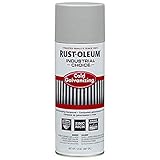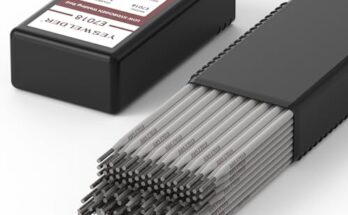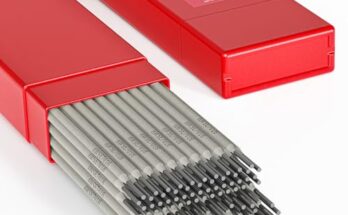Let me guess—you’re standing there, looking up at that shiny galvanized metal roof, wondering how in the world you’re supposed to get paint to stick to it. Galvanized metal is known for its durability, but when it comes to painting, it’s a bit stubborn. The zinc coating that protects it from rust also makes it tricky for paint to adhere properly.

Photo by todayshomeowner
If you’ve been scratching your head, thinking, “How do I paint a galvanized metal roof and make it actually last?”—you’re in the right place.
If your goal is to freshen up an old roof, match it with your house color, or simply protect it for the long haul, I’ll walk you through every step I’ve taken myself.
Grab a cup of coffee, sit back, and let’s get into this project like two neighbors chatting on the porch.
Why Painting a Galvanized Metal Roof Requires Extra Care
Before you even pick up a brush, there’s one thing you need to know—galvanized metal isn’t like regular metal. It’s coated with a layer of zinc to stop rust from forming. That’s great for longevity, but not so great for paint adhesion.
If you skip proper prep, paint can peel, flake, or even slide right off. I’ve seen it happen. That’s why following the right steps matters so much.
When Should You Paint a Galvanized Metal Roof?
Timing is everything. The best time to paint is during a dry, mild season—ideally spring or fall. Avoid painting during extremely hot or cold weather. And never paint if rain is in the forecast within 24 hours. Moisture can mess with paint adhesion big time.
You also want to let the roof “weather” if it’s newly installed. That typically means waiting 6 months so that the oily residue and shiny zinc finish fade a bit. If you’re in a rush, don’t worry—I’ll show you how to prep it properly regardless.
What You’ll Need Before You Start
Here’s a quick table of all the materials and tools you’ll want to gather:
| Item | Purpose |
|---|---|
| Trisodium Phosphate (TSP) | Degreases and cleans the surface |
| White vinegar or etching primer | Prepares zinc coating for paint adhesion |
| Wire brush or scouring pad | Removes surface buildup |
| Pressure washer (optional) | Speeds up cleaning |
| Metal primer (zinc-specific) | Base layer for paint to stick |
| Acrylic latex paint | Flexible, weather-resistant topcoat |
| Paint sprayer or roller | Applies paint evenly |
| Ladder and safety gear | Keeps you safe during roof access |
| Drop cloths or tarp | Protects landscaping or driveway below |
Make sure you have everything on hand before you start. Running to the store halfway through makes the job more stressful than it needs to be.
Step 1: Clean the Roof Thoroughly
This is where most people go wrong—they skip or rush this part. But cleaning is absolutely essential. Dirt, oil, and oxidation will all prevent paint from sticking.
I like to use a mixture of water and TSP (trisodium phosphate). Just scrub the surface using a stiff-bristled brush or scouring pad. If the roof is older and has mildew or algae, this will clean that off too.
For hard-to-reach areas or if you’re covering a large space, a pressure washer can save you a ton of time. Just keep the pressure low enough not to dent the metal.
Let the roof dry completely before moving on. If it’s a hot sunny day, that might only take an hour or two. Otherwise, give it overnight.
Step 2: Neutralize the Zinc Layer with White Vinegar or Etching Primer
Here’s the trick nobody tells you about: galvanized metal is too smooth for paint to grip. So you need to etch the surface.
You’ve got two options here:
White vinegar: It’s cheap, safe, and surprisingly effective. Just wipe it across the roof with a rag or sponge. Let it sit for a couple of hours. Then rinse with water and let dry.
Etching primer: If you prefer a more commercial route, etching primer is designed to do this exact job. You’ll usually spray it on and let it cure based on the product instructions.
This step gives the metal a “bite” for the primer to grab onto. Don’t skip it.
Step 3: Apply a Galvanized Metal Primer
Now comes the base coat. You’ll want a primer that’s made specifically for galvanized metal. These are usually acrylic or latex-based and help create a bond between the paint and the metal.
I prefer to use a roller or a paint sprayer for this. You get faster coverage and a smoother finish. A brush can work, but it’s slower and leaves streaks.
Make sure the primer layer is even. It doesn’t need to be thick—just fully cover the surface. Let it dry thoroughly before applying the topcoat. Follow the drying time listed on the can. It’s usually 4–6 hours but can vary.
Step 4: Time to Paint the Roof
This is the fun part—watching your roof come back to life.
Choose an exterior-grade acrylic latex paint. These paints are flexible, which is great for metal surfaces that expand and contract with the weather. They’re also UV-resistant and made to stand up to the elements.
Apply the paint just like the primer. I usually do two coats to make sure I get full coverage and long-term protection. Let the first coat dry completely before adding the second. Again, follow the product instructions for dry time.
A sprayer works best for large roofs because it saves time and gives a more even look. If you’re using a roller, work in sections and keep a wet edge so you don’t get lap marks.
Common Mistakes to Avoid
Let me share a few lessons I learned the hard way:
- Don’t paint over oily or dirty surfaces – Even if the roof looks clean, always wash it first.
- Avoid oil-based paints – They don’t adhere well to galvanized metal.
- Don’t skip the primer – The paint needs something to hold onto.
- Watch the weather – Rain or high humidity can ruin a paint job overnight.
- Take your time on prep – Rushing this job will cost you more later.
Trust me, a few extra hours of prep work can give you years more out of your paint job.
How Long Will the Paint Last?
If you’ve done everything right, your paint job should last 10 to 15 years. Of course, that depends on your climate and the quality of the products you used. In harsher weather regions, you might need to touch up sooner. But good prep and good paint go a long way.
I check mine once a year, especially after winter, to see if there’s any fading or flaking. A quick touch-up here and there keeps it looking new for years.
Pros of Painting a Galvanized Roof
Painting a galvanized metal roof isn’t just about looks. There are real benefits too:
- Improved rust resistance – Adds another layer of protection
- Longer lifespan – A well-maintained roof can outlast others by decades
- Better energy efficiency – Reflective paint can lower your cooling bills
- Boosts home value – A fresh, good-looking roof adds curb appeal
- Customization – Match your home’s style with any color
What Paint Colors Work Best?
Here’s a tip if you’re unsure what color to choose. Lighter colors reflect sunlight better, which can reduce heat buildup in your attic. Think white, beige, or light gray.
If you’re after a bold look, go for earth tones or darker colors. Just know that darker shades can get hotter in summer and may fade a bit faster.
Maintaining a Painted Metal Roof
Once your roof is painted, maintenance is super easy.
- Rinse it off every 6–12 months with a hose or pressure washer
- Look for signs of peeling or rust and touch them up early
- Clear away debris like leaves or branches that can trap moisture
- Avoid walking on the roof unless absolutely necessary (use boards to distribute weight if you do)
With just a little care, your freshly painted roof can last a long time and look amazing year after year.
Final Thoughts
Painting a galvanized metal roof might sound like a lot of work, and I won’t lie—it does take some elbow grease. Once you finish, the result is so worth it. Not only does your home look refreshed, but you’re also extending the life of your roof and protecting your investment.
I’ve painted more than one galvanized roof now, and I can honestly say the key is patience and prep. Do it right the first time, and you won’t have to worry about it again for a decade or more.
If you’re standing there wondering whether it’s worth the effort, let me tell you—it is. And you can absolutely do it yourself with the right tools, a clear plan, and a good weekend of work.
So roll up those sleeves, get started, and enjoy the satisfaction of a job well done.
FAQs
Can you paint galvanized metal without primer?
No, primer is essential. It helps the paint stick to the smooth zinc coating and ensures long-lasting results.
How do I know if my galvanized roof is ready to be painted?
If it’s new, wait at least six months or use white vinegar to test adhesion. If water doesn’t bead up on the surface, it’s ready.
What type of paint should I use on galvanized metal?
Use acrylic latex paint that’s designed for metal surfaces. Avoid oil-based or standard wall paints.
Do I need to remove old paint before repainting?
Only if it’s flaking or peeling. In that case, scrape it off, sand the area, and spot-prime before repainting.
Can I use a regular house paint sprayer for the roof?
Yes, just make sure the sprayer is rated for exterior latex paints. Clean it thoroughly between coats to avoid clogs.
Is it safe to walk on a metal roof while painting?
It can be slippery. Always wear non-slip shoes and consider using a harness. Distribute your weight with a board if needed.







